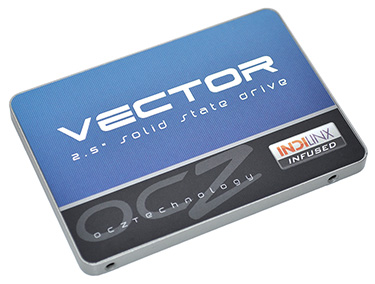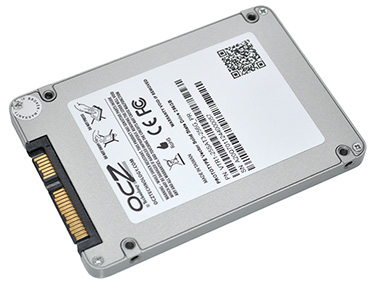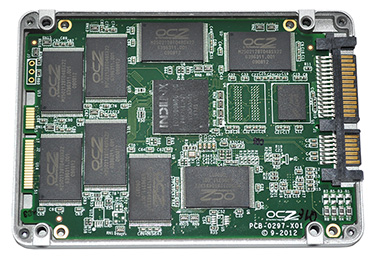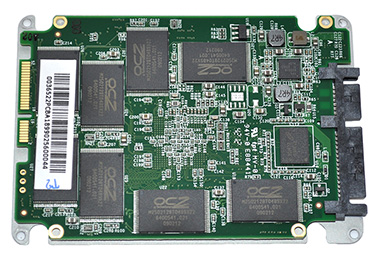Introduction
Enjoying the benefits of ultra-fast solid-state storage? Then OCZ is a company that deserves your thanks. In the past five years, it's difficult to think of a brand that's done more to help push SSDs into the mainstream.
OCZ arrived on the scene early in 2008 and was first to market with an Indilinx-based drive a few months later. In 2009, the company announced the world's first bootable PCIe SSD (the Z-Drive), it subsequently launched the first 1TB SSD, and it became the first to debut a SandForce-based drive in the form of the popular Vertex 2.
2010 saw the arrival of PCIe SSDs for consumers, and OCZ then signalled its intent by shutting down its DRAM division to focus primarily on SSDs. After that pivotal move, the company acquired Indilinx, PLX Technology and SANRAD, Inc. in an effort to bolster its SSD proposition, and achieved further retail success with the launch of the world's first second-generation SandForce drive, the Vertex 3.
With well over a million SSDs shipped, you'd think that OCZ would be a go-to brand for anyone in the market for a new SSD. Not quite. Despite all of the above achievements, OCZ's brief history in producing SSDs has been tainted by high-profile firmware bugs and blue screens of death that put a dent the company's reputation.
As a result of consumer perception, OCZ can no longer continue to push out cutting-edge SSDs with gay abandon; each new release needs to promise reliability above all else. Enter the Vector Series.
In many ways, the Vector marks a shift in thinking for OCZ's SSD division. The company is quick to state that "quality, reliability and stability were the number one priorities" for the new drive, and adds that the Vector Series is OCZ's "most extensively and comprehensively tested consumer SSD line to date."
Such statements reveal the extent of the damage to the company's reputation, but they also suggest that OCZ is doing whatever it takes to get it right and return to the top of the SSD tree. Unlike previous OCZ drives, the 7mm-thick Vector doesn't scream solely about performance - as we're about to demonstrate, it's a cutting-edge design that attempts to excel in every meaningful way; speed, stability and endurance.
Representing another key milestone, the Vector Series is the first to be powered by the new Indilinx Barefoot 3 controller. A product of earlier acquisitions, the Barefoot 3 silicon is OCZ's first completely in-house design (no messing about this time) and it makes the Vector Series exclusive in nature; this is one of few drives where the controller and firmware are fully governed by the manufacturer.
Inside the multi-core controller, OCZ has an ARM Cortex-based processor working in unison with an OCZ Aragon co-processor. Further information on the exact role of each core hasn't been made available, but we do know that the controller makes use of a DRAM cache and communicates to accompanying NAND memory across eight available channels.
Our 256GB review sample, pictured above, comes equipped with the Barefoot 3 controller, a pair of 256MB DDR3 cache chips, and 16 MLC NAND memory chips weighing in at 16GB apiece. OCZ attempts to cut costs by purchasing and packaging the NAND itself, but the underlying wafers are a 25nm design from IM Flash Technologies. There's no built-in NAND redundancy, so users have the complete 256GB to play with, and, unlike earlier SandForce drives, on-the-fly compression isn't used to speed up writes, so the Vector Series should remain fast regardless of data type.
OCZ Vector Specification |
|||
|---|---|---|---|
| Model | VTR1-25SAT3-128G |
VTR1-25SAT3-256G |
VTR1-25SAT3-512G |
| Capacity | 128GB |
256GB |
512GB |
| Processor | Indilinx Barefoot 3 |
||
| NAND | IMFT 25nm |
||
| Interface | SATA 6Gbps |
SATA 6Gbps |
SATA 6Gbps |
| Sequential Read Speed | Up to 550 MB/s |
Up to 550 MB/s |
Up to 550 MB/s |
| Sequential Write Speed | Up to 400 MB/s |
Up to 530 MB/s |
Up to 530 MB/s |
| Random Read Speed (IOPS 4KB) |
Up to 90,000 |
Up to 100,000 |
Up to 100,000 |
| Random Write Speed (IOPS 4KB) |
Up to 95,000 |
Up to 95,000 |
Up to 95,000 |
| Active Power Consumption | 2.25W |
2.25W |
2.25W |
| Performance Optimisations | TRIM, Idle Time Garbage Collection |
||
| Bundled Contents | Acronis cloning software registration key 3.5in mounting bracket |
||
| Warranty | 5 Years |
||
| UK Retail Price | £110 |
£200 |
£400 |
A quick look at the specification of the initial capacities - 128GB, 256GB and 512GB - show that all three models will be ultra-fast with read speeds of up to 550MB/s and random 4KB performance in excess of 90,000 input/output operations per second. Though, if performance matters more than cost, it's worth noting that the 256GB and 512GB models, which presumably saturate all eight available NAND channels, are the fastest on offer.
The numbers are a tantalising prospect for any enthusiast, but the Vector's price tag is a direct reflection of its positioning. Roughly £200 for a 256GB drive is a premium fee, and it puts OCZ's SSD at the top-end of the market alongside the likes of Samsung's SSD 840 Pro Series and Plextor's M5 Pro.
The Vector Series drive is shaping up to be fast, yet despite the performance credentials, OCZ is keen to keep the focus on reliability. We're told the Vector drive was distributed to beta testers prior to release, each drive will be subjected to a factory burn-in procedure before shipping to consumers, and perhaps most importantly, OCZ promises to give each future firmware update a longer validation cycle.
The accompanying five-year warranty is very encouraging, and the early signs are good; there have been no firmware updates since launch and, in contrast to previous launches, OCZ's support forum is eerily quiet.













